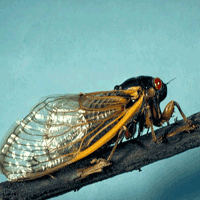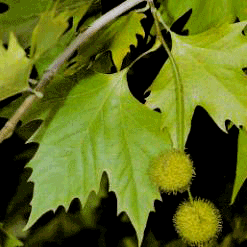
Abundance and impact of egg parasitoids on the pine processionary moth (Thaumetopoea pityocampa) in Bulgaria
Plamen Mirchev, Georgi Georgiev , Margarita Georgieva, Ivailo Markoff, Gergana Zaemdzhikova, Maria Matova
iForest - Biogeosciences and Forestry, Volume 14, Issue 5, Pages 456-464 (2021)
doi: https://doi.org/10.3832/ifor3538-014
Published: Oct 02, 2021 - Copyright © 2021 SISEF
Research Articles
Abstract
We collected 2297 egg batches of the pine processionary moth (Thaumetopoea pityocampa) during the period 1991-2018 from 44 sites in Bulgaria. The sampling sites were classified into three groups according to T. pityocampa phenological form (early, late and both forms) as well as in two groups of its range (historical and newly colonized areas). Seven primary egg parasitoids were identified: Ooencyrtus pityocampae, Baryscapus servadeii, Pediobius bruchicida, Anastatus bifasciatus, Eupelmus (Macroneura) vesicularis, Eupelmus (Macroneura) vladimiri and Trichogramma sp., and one hyperparasitoid, Baryscapus transversalis. The average impact of egg parasitoids (the percentage of parasitized host eggs) on T. pityocampa in Bulgaria was 13.8%. The two main parasitoids, O. pityocampae and B. servadeii, parasitized about 90% of the host eggs. The remaining parasitoids were of insignificant consequence to the parasitism of the T. pityocampa eggs, but in areas recently colonized by the pest, A. bifasciatus and Trichogramma sp. had a noticeable share (up to 33% of the impact). In old habitats of the host (areas colonized more than 10 years), the impact was almost two times higher than in new ones (15.3% vs. 8.6%). This could be attributed to B. servadeii, which was rare in newly colonized areas of T. pityocampa (impact 0.5%), but strongly dominant in old habitats (impact 7.2%). In contrast, O. pityocampae had a significant impact in new habitats (4.9%), which increased only slightly over time, reaching 6.0% in old habitats. There was no significant difference between the percentage of parasitism of the early and late form of the pine processionary moth (14.8% vs. 15.9%). However, there was a significant difference in the share of separate species in the parasitoid complex: in the early form, B. servadeii definitely dominated (63% of the infested eggs), while in the late form O. pityocampae dominated, although not so strongly (52% of the infested eggs). This difference is most likely due to the phenological characteristics of the parasitoids and the two forms of T. pityocampa. B. transversalis secondarily infested about 5% of the eggs of O. pityocampae and B. servadeii. This percentage was slightly lower for new habitats and habitats of the early form of pine processionary moth (3% and 4%, respectively). The impacts of the main parasitoids O. pityocampae and B. servadeii as well as the total impact of the parasitoid complex as a whole decreased with altitude. Conversely, the impacts of A. bifasciatus and Trichogramma sp. slightly increased with altitude probably due to the reduced competition of the main parasitoids.
Keywords
Thaumetopoea pityocampa, Distribution, Habitats, Expansion, Phenological Forms, Egg Parasitism, Bulgaria
Authors’ Info
Authors’ address
Georgi Georgiev 0000-0001-5703-2597
Margarita Georgieva 0000-0003-3165-1992
Ivailo Markoff 0000-0002-8725-557X
Gergana Zaemdzhikova
Maria Matova
Forest Research Institute, Bulgarian Academy of Sciences, Sofia (Bulgaria)
Corresponding author
Paper Info
Citation
Mirchev P, Georgiev G, Georgieva M, Markoff I, Zaemdzhikova G, Matova M (2021). Abundance and impact of egg parasitoids on the pine processionary moth (Thaumetopoea pityocampa) in Bulgaria. iForest 14: 456-464. - doi: 10.3832/ifor3538-014
Academic Editor
Massimo Faccoli
Paper history
Received: May 29, 2020
Accepted: Aug 07, 2021
First online: Oct 02, 2021
Publication Date: Oct 31, 2021
Publication Time: 1.87 months
Copyright Information
© SISEF - The Italian Society of Silviculture and Forest Ecology 2021
Open Access
This article is distributed under the terms of the Creative Commons Attribution-Non Commercial 4.0 International (https://creativecommons.org/licenses/by-nc/4.0/), which permits unrestricted use, distribution, and reproduction in any medium, provided you give appropriate credit to the original author(s) and the source, provide a link to the Creative Commons license, and indicate if changes were made.
Web Metrics
Breakdown by View Type
Article Usage
Total Article Views: 30790
(from publication date up to now)
Breakdown by View Type
HTML Page Views: 26561
Abstract Page Views: 1690
PDF Downloads: 1975
Citation/Reference Downloads: 5
XML Downloads: 559
Web Metrics
Days since publication: 1553
Overall contacts: 30790
Avg. contacts per week: 138.78
Citation Metrics
Article Citations
Article citations are based on data periodically collected from the Clarivate Web of Science web site
(last update: Mar 2025)
Total number of cites (since 2021): 2
Average cites per year: 0.40
Publication Metrics
by Dimensions ©
Articles citing this article
List of the papers citing this article based on CrossRef Cited-by.
References
Ecological responses of parasitoids, predators and associated insect communities to the climate-driven expansion of pine processionary moth. In: “Processionary Moths and Climate Change: an Update” (Roques A ed). Springer, Dordrecht, Netherlands, pp. 311-358.
Gscholar
Zur Biologie von Baryscapus transversalis Graham (Hym.: Eulophidae), Hyperparasitoid der Primärparasitoiden von Thaumetopoea pityocampa (Den. and Schiff.) (Lep., Thaumetopoeidae) [On the biology of Baryscapus transversalis Graham (Hym.: Eulophidae), hyperparasitoid of the primary parasitoids of Thaumetopoea pityocampa (Den. and Schiff.) (Lep., Thaumetopoeidae)]. Mitteilungen der Deutschen Gesellschaft für Allgemeine und Angewandte Entomologie 9: 453-457. [in German]
Gscholar
Response of the egg parasitoids of the pine processionary moth to host density and forest cover at the southern edge of the range. Agricultural and Forest Entomology 23 (2): 212-221.
CrossRef | Gscholar
Baryscapus transversalis Graham (Hymenoptera: Eulophidae) - a new species for the fauna of Bosnia and Herzegovina. Šumarski List 1-2: 69-71.
Gscholar
An integrative taxonomic study of European Eupelmus (Macroneura) (Hymenoptera: Chalcidoidea: Eupelmidae), with a molecular and cytogenetic analysis of Eupelmus (Macroneura) vesicularis: several species hiding under one name for 240 years. Zoological Journal of the Linnean Society 181 (3): 519-603.
CrossRef | Gscholar
Comparative studies of egg parasitoids of the pine processionary moth (Thaumetopoea pityocampa, Den. and Schiff) in historic and expansion areas in France and Bulgaria. Forestry 94 (2): 324-331.
CrossRef | Gscholar
A reclassification of the European Tetrastichinae (Hymenoptera: Eulophidae), with a revision of certain genera. Bulletin of the British Museum of Natural History (Entomology) 55 (1): 1-392.
Gscholar
A reclassification of the European Tetrastichinae (Hymenoptera: Eulophidae): revision of the remaining genera. Memoirs of the American Entomological Institute 49: 1-322.
Gscholar
Insect - Tree Interactions in Thaumetopoea pityocampa. In: “Processionary Moths and Climate Change: an Update” (Roques A ed). Springer, Dordrecht, Netherlands, pp. 265-310.
CrossRef | Gscholar
Ricerche sui parassiti oofagi della Thaumetopoea pityocampa (Schiff.) [Research on oophagous parasites of Thaumetopoea pityocampa (Schiff.)]. Annali del Centro di Economia Montana delle Venezie 4: 205-271. [in Italian]
Gscholar
Egg parasitoids of the processionary moth Thaumetopoea pityocampa (Den. and Schiff.) collected in Albania. Bollettino di Zoologia Agraria e di Bachicoltura - Serie II 31 (2): 152-165.
Gscholar
Egg parasitoids on pine processionary moth, Thaumetopoea pityocampa (Den. & Schiff.) (Lepidoptera, Thaumetopoeidae) in countries of Balkan Peninsula. D.Sc. Thesis, University of Forestry, Sofia, Bulgaria, pp. 64. [in Bulgarian]
Gscholar
Enlargement of pine processionary moth (Thaumetopoea pityocampa) range in Bulgaria. Forest Review 48 (1): 4-7.
Gscholar
Trichogrammatidae. In: “Keys to the insects of the European Part of the USSR, Volume III, Hymenoptera, Part II” (Medvedev GS ed). Nauka, Leningrad, Russia, pp. 501-513. [in Russian]
Gscholar
Climate warming and past and present distribution of the processionary moths (Thaumetopoea spp.) in Europe, Asia Minor and North Africa. In: “Processionary Moths and Climate Change: an Update” (Roques A ed). Springer, Dordrecht, Netherlands, pp. 81-161.
CrossRef | Gscholar
Climatic regions in Bulgaria and their climate. Vol. 5, Publishing House “Science and Art”, Sofia, Bulgaria, pp. 176. [in Bulgarian]
Gscholar
A population genetic study of the egg parasitoid Baryscapus servadeii reveals large scale automictic parthenogenesis and almost fixed homozygosity. Biological Control 139 (1652): 104097.
CrossRef | Gscholar
Identification by meconia of four species egg parasitoids Thaumetopoea pityocampa (Den. and Schiff.) (Insecta Lepidoptera Thaumetopoeidae). Bollettino di Zoologia Agraria e di Bachicoltura - Serie II 27 (1): 61-70.
Gscholar
Eupelmidae. In: “Keys to the insects of the European Part of the USSR, Volume III, Hymenoptera, Part II” (Medvedev GS ed). Nauka, Leningrad, Russia, pp. 228-235. [in Russian]
Gscholar
Encyrtidae. In: “Keys to the insects of the European Part of the USSR, Volume III, Hymenoptera, Part II” (Medvedev GS ed). Nauka, Leningrad, Russia, pp. 236-328. [In Russian]
Gscholar
Eulophidae. In: “Keys to the insects of the European Part of the USSR, Volume III, Hymenoptera, Part II” (Medvedev GS ed). Nauka, Leningrad, Russia, pp. 381-467. [In Russian]
Gscholar
Parasitic Hymenoptera of the fam. Encyrtidae of Palaearctics. Nauka, Leningrad, Russia, pp. 489. [In Russian]
Gscholar
Spectrum of egg parasitoids and rate of parasitism of egg batches of the pine processionary moth Thaumetopoea pityocampa (Den. & Schiff.) in the northern Peleponnes/Greece. Journal of the Entomological Research Society 1 (2): 1-8.
Online | Gscholar

















